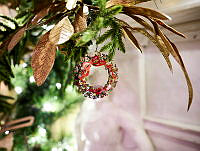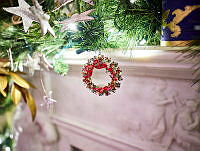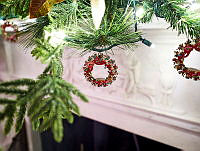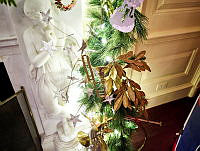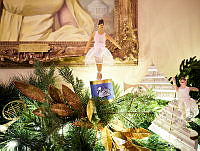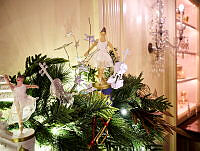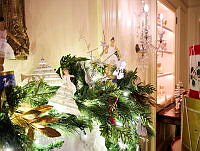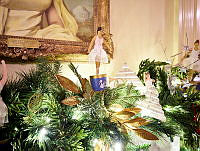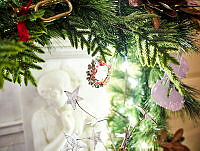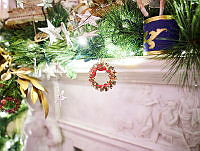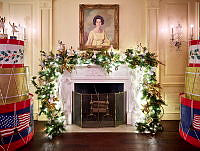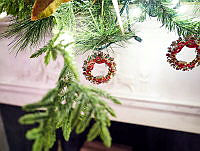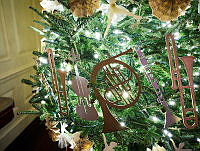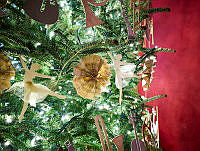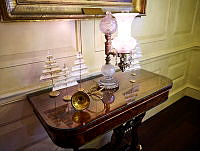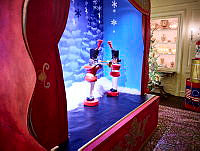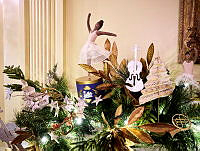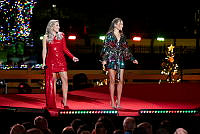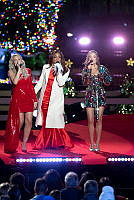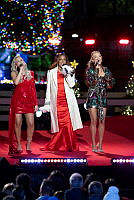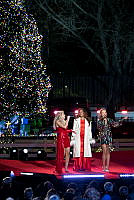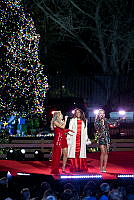Rubenstein Center Scholarship
Arts Advisors in the Kennedy White House

Special Assistant to the President Arthur M. Schlesinger Jr. (left) oversees the swearing in of August Heckscher as Special Consultant on the Arts on March 8, 1962.
John F. Kennedy Presidential Library and Museum/NARAPresident John F. Kennedy and First Lady Jacqueline Kennedy’s advocacy for the performing arts endures as a vital part of the Kennedy White House legacy. From 1961 to 1963, the White House became a focal point for arts and culture as the administration hosted numerous concerts and performances. One of the most significant White House concerts during the Kennedy years took place on November 13, 1961. Cellist Pablo Casals performed in the East Room for 200 guests, invitees who represented the best of American arts, music, and culture.1
The White House established the position of Special Consultant on the Arts in March, 1962 with the appointment of August Heckscher, an expert lecturer and writer on the politics, the arts, and public affairs.2 Referring to a burgeoning nation-wide cultural embrace of the arts, Heckscher reasoned that the government could help facilitate popular appreciation of the American arts. Speaking at the National Press Club in September 1962, he told the audience that, “Government must and does realize that we must build by calling on our finest geniuses. From a postage stamp to national roadways . . . government should plan with aesthetic consideration in mind.”3
In June 1963, Heckscher left the Kennedy administration to devote more attention to his ongoing role as Director of the Twentieth Century Fund in New York, but not before submitting a report, "The Arts and the National Government,” that provided numerous recommendations for sustaining government support of the arts, including the creation of an arts advisory council.4 In a letter accepting Heckscher’s resignation, President Kennedy reaffirmed his own dedication to the arts, remarking, "I have long believed . . . that the quality of America's cultural life is an element of immense importance in the scales by which our worth will ultimately be weighed." He further declared that the arts were equally important to society as the sciences.

President John F. Kennedy at a fundraising event for the National Cultural Center, known today as the John F. Kennedy Center for the Performing Arts on November 29, 1962 at the National Guard Armory in Washington, D.C.
John F. Kennedy Presidential Library and Museum/NARABolstered by the suggestions in Heckscher’s report, Kennedy created plans and set goals for the arts council. On June 12, 1963, he signed Executive Order 11112, establishing the President’s Advisory Council on the Arts. This group, comprised of both private citizens and government officials, was tasked primarily to “survey and assess the needs and prospects of the various arts throughout the United States, the means used to encourage creative activity and to afford opportunity for participation in and appreciation and enjoyment of the arts, and the relative roles of governmental and non-governmental institutions in relation to the arts.”5
In a statement on the establishment of the committee, President Kennedy expressed his desire that the committee would fulfill its objectives, remarking that, “widespread public interest in the arts has not always been accompanied by adequate concern for the basic institutions of our cultural life.” Kennedy was cognizant of the need to cultivate interest in the arts among the nation’s youth as well as the need for the committee to acknowledge and reward outstanding artists and performers.6 Less than one month before his untimely death, President Kennedy expanded the Advisory Council from no more than thirty private citizens to forty. He also added the President of the National Gallery of Art, Paul Mellon, and the Chairman of the Trustees of the National Cultural Center, Roger L. Stevens, to the council.7
Kennedy's influence continued well beyond his term in office. The National Council on the Arts was established in 1964.8 In 1965, Congress and President Lyndon B. Johnson created the National Endowment for the Arts and the National Endowment for the Humanities.9 In 1982, President Ronald Reagan formed the President's Committee on the Arts and the Humanities.10 The Kennedy Center continues to serve as an enduring symbol of President Kennedy's dedication to the advancement of the arts in American culture and society.

President Lyndon B. Johnson signs the Arts and Humanities Bill in a Rose Garden ceremony on September 29, 1965.
Lyndon Baines Johnson Presidential Library and Museum/ NARA












